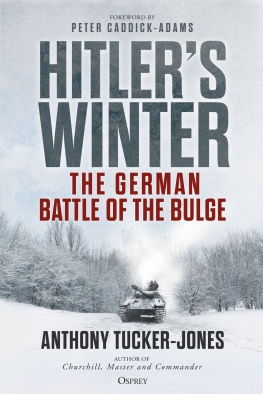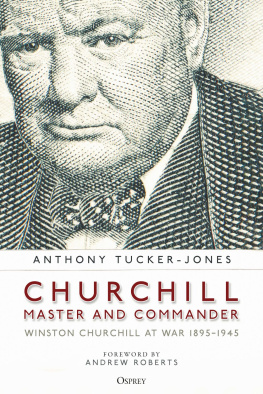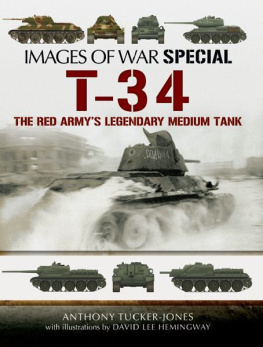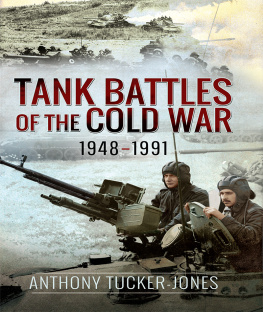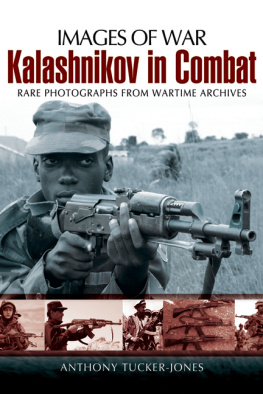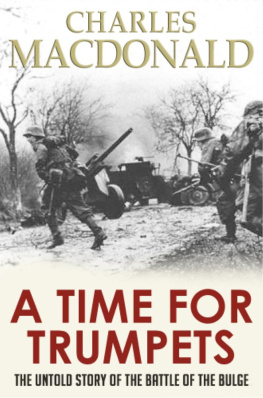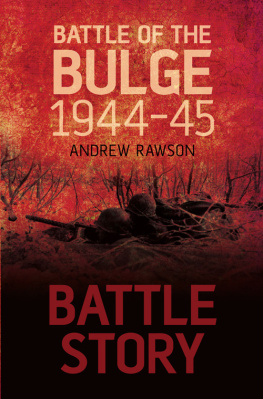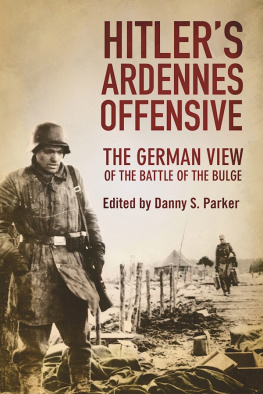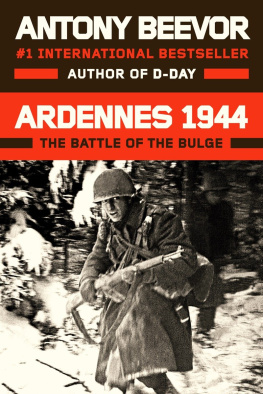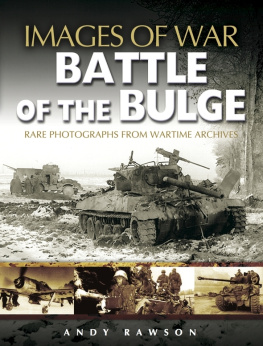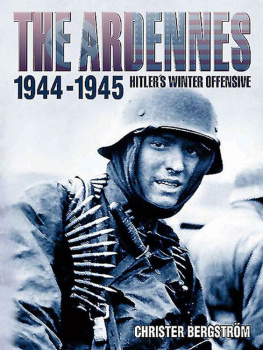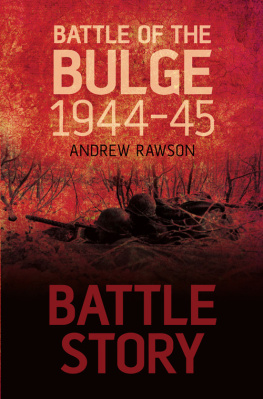Anthony Tucker-Jones - Hitler’s Winter: The German Battle of the Bulge
Here you can read online Anthony Tucker-Jones - Hitler’s Winter: The German Battle of the Bulge full text of the book (entire story) in english for free. Download pdf and epub, get meaning, cover and reviews about this ebook. City: Oxford, year: 2022, publisher: Osprey Publishing, genre: History. Description of the work, (preface) as well as reviews are available. Best literature library LitArk.com created for fans of good reading and offers a wide selection of genres:
Romance novel
Science fiction
Adventure
Detective
Science
History
Home and family
Prose
Art
Politics
Computer
Non-fiction
Religion
Business
Children
Humor
Choose a favorite category and find really read worthwhile books. Enjoy immersion in the world of imagination, feel the emotions of the characters or learn something new for yourself, make an fascinating discovery.
- Book:Hitler’s Winter: The German Battle of the Bulge
- Author:
- Publisher:Osprey Publishing
- Genre:
- Year:2022
- City:Oxford
- Rating:5 / 5
- Favourites:Add to favourites
- Your mark:
Hitler’s Winter: The German Battle of the Bulge: summary, description and annotation
We offer to read an annotation, description, summary or preface (depends on what the author of the book "Hitler’s Winter: The German Battle of the Bulge" wrote himself). If you haven't found the necessary information about the book — write in the comments, we will try to find it.
What a brilliant book this is a terrific narrative of Hitlers Ardennes offensive of December 1944 superb storytelling that achieves a skilful balance between drama and detail. - James Holland
The Battle of the Bulge was the last major German offensive in the West. Launched in the depths of winter to neutralize the overwhelming Allied air superiority, three German armies attacked through the Ardennes, the weakest part of the American lines, with the aim of splitting the Allied armies and seizing the vital port of Antwerp within a week. It was a tall order, as the Panzers had to get across the Our, Amblve, Ourthe and Meuse rivers, and the desperate battle became a race against time and the elements, which the Germans would eventually lose. But Hitlers dramatic counterattack did succeed in catching the Allies off guard in what became the largest and bloodiest battle fought by US forces during the war.
In this book, Anthony Tucker-Jones tells the story of the battle from the German point of view, from the experiences of the infantrymen and panzer crewmen fighting on the ground in the Ardennes to the operational decisions of senior commanders such as SS-Oberstgruppenfhrer Josef Sepp Dietrich and General Hasso von Manteuffel that did so much to decide the fate of the offensive. Drawing on new research, Hitlers Winter provides a fresh perspective on one of the most famous battles of World War II.
Anthony Tucker-Jones: author's other books
Who wrote Hitler’s Winter: The German Battle of the Bulge? Find out the surname, the name of the author of the book and a list of all author's works by series.

